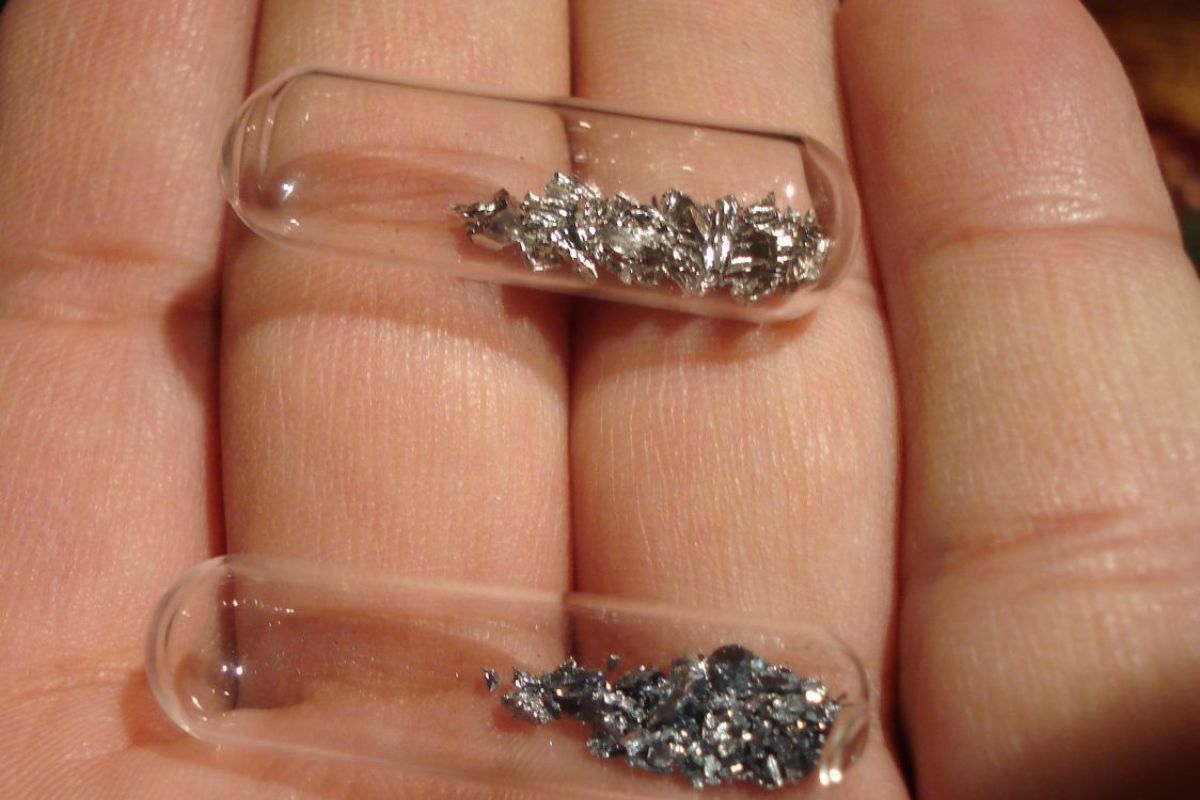
Iridium is one of those elements that might not pop up in everyday conversation, but it holds some pretty cool secrets. Ever wondered what makes this rare metal so special? Iridium is not just any metal; it's one of the densest elements on Earth and can withstand extreme temperatures without breaking a sweat. Found in meteorites and used in spark plugs, this element has a fascinating story. From its discovery in the early 19th century to its modern-day applications, iridium plays a crucial role in various industries. Ready to dive into 50 intriguing facts about this remarkable element? Let's get started!
Key Takeaways:
- Iridium, a rare and dense metal, has fascinating properties and diverse uses in industries like aerospace, medical, and jewelry. It's also found in nature and has unique physical characteristics.
- Iridium's resistance to corrosion, high melting point, and presence in meteorites make it a valuable and intriguing element with applications in spark plugs, scientific instruments, and even the international prototype kilogram.
What is Iridium?
Iridium is a rare, dense metal known for its remarkable properties. Found in the Earth's crust and meteorites, this element has a fascinating story to tell.
- Iridium is one of the rarest elements on Earth.
- It belongs to the platinum group of metals.
- The symbol for iridium on the periodic table is Ir.
- Iridium has an atomic number of 77.
- It was discovered in 1803 by Smithson Tennant.
- Named after the Greek goddess Iris, symbolizing rainbows.
- Iridium is the second densest element, after osmium.
- It has a density of 22.56 grams per cubic centimeter.
- This metal is highly resistant to corrosion.
- Iridium can withstand temperatures up to 2,410°C (4,370°F).
Uses of Iridium
Iridium's unique properties make it valuable in various industries. Let's explore some of its applications.
- Used in spark plugs for aircraft engines.
- Essential in the production of crucibles for growing crystals.
- Utilized in the manufacturing of electrical contacts.
- Iridium is a key component in the production of chlorine.
- Employed in the medical field for radiation therapy.
- Used in the creation of high-performance alloys.
- Iridium is found in the tips of fountain pens.
- Utilized in the production of scientific instruments.
- Iridium is used in the automotive industry for catalytic converters.
- Employed in the aerospace industry for rocket engines.
Iridium in Nature
Iridium's presence in nature is both fascinating and rare. Here are some intriguing facts about its natural occurrence.
- Found in meteorites, indicating extraterrestrial origins.
- Present in the Earth's crust at about 0.001 parts per million.
- Often found in alluvial deposits with platinum.
- Iridium is a byproduct of nickel and copper mining.
- The largest deposits are in South Africa and Russia.
- Iridium is also found in the Sudbury Basin in Canada.
- The metal is often associated with volcanic activity.
- Iridium anomalies are linked to the dinosaur extinction event.
- The K-T boundary layer contains high levels of iridium.
- Iridium is used as a marker in geological studies.
Iridium's Physical Properties
Iridium's physical properties make it stand out among other elements. Let's delve into some of these characteristics.
- Iridium is a silvery-white metal.
- It has a melting point of 2,446°C (4,435°F).
- The boiling point of iridium is 4,428°C (8,002°F).
- Iridium is extremely hard and brittle.
- It has a face-centered cubic crystal structure.
- Iridium is paramagnetic, meaning it is weakly attracted to magnets.
- It has a high modulus of elasticity, making it very stiff.
- Iridium's thermal conductivity is 147 W/m·K.
- The metal has a high electrical conductivity.
- Iridium is highly reflective, especially in the infrared spectrum.
Fun Facts about Iridium
Iridium has some quirky and fun aspects that make it even more interesting. Here are a few to tickle your curiosity.
- Iridium is used in the international prototype kilogram.
- It is one of the most corrosion-resistant metals known.
- Iridium can form beautiful, colorful compounds.
- The metal is used in the production of artificial joints.
- Iridium is a key component in some timepieces.
- It is used in the production of certain types of jewelry.
- Iridium is sometimes used in the creation of coins.
- The metal is used in the production of some types of batteries.
- Iridium is a critical component in some scientific research.
- It is used in the production of some types of lasers.
Iridium: A Metal Like No Other
Iridium stands out as one of the most fascinating elements on the periodic table. Its resistance to corrosion, high melting point, and unique applications make it invaluable in various industries. From jewelry to spacecraft, iridium's versatility is unmatched. This rare metal, often found in meteorites, tells a story of cosmic origins and earthly importance.
Understanding iridium's properties and uses can deepen appreciation for the materials shaping our world. Whether you're a science enthusiast or just curious, knowing these facts about iridium adds a layer of knowledge to everyday life.
Next time you see a spark plug or hear about space missions, remember the role iridium plays. This metal, though not as famous as gold or silver, holds a special place in the world of elements. Iridium truly is a metal like no other.
Frequently Asked Questions
Was this page helpful?
Our commitment to delivering trustworthy and engaging content is at the heart of what we do. Each fact on our site is contributed by real users like you, bringing a wealth of diverse insights and information. To ensure the highest standards of accuracy and reliability, our dedicated editors meticulously review each submission. This process guarantees that the facts we share are not only fascinating but also credible. Trust in our commitment to quality and authenticity as you explore and learn with us.


